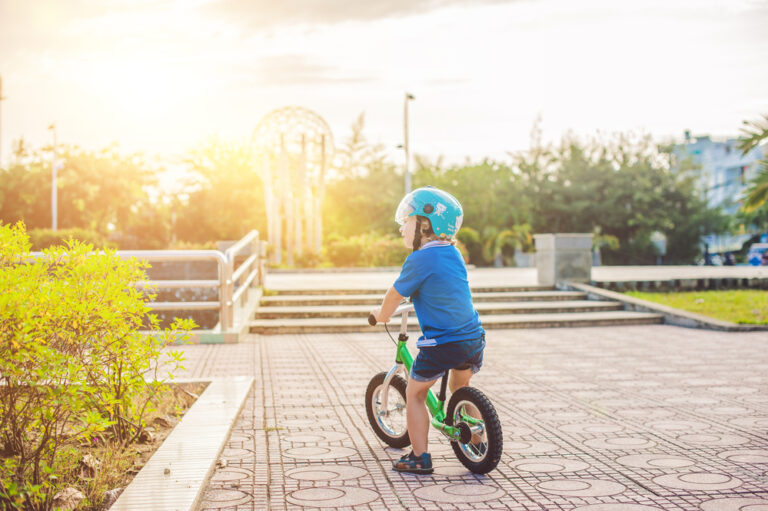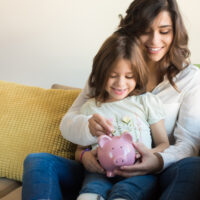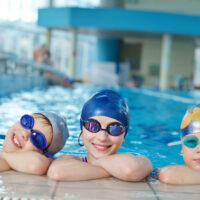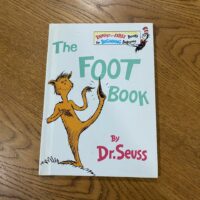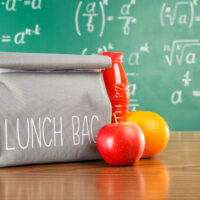There are certain things to consider when looking for a balance bike for your child, such as adjustability, how heavy it is, and, of course, cost. There are many great options out there, but my ultimate top pick is the Strider 12 Sport balance bike. It is suitable for kids from 18 months of age, all the way up to 5 years of age. It isn’t the lightest balance bike on the market, but at just 6.7 pounds, it should be light enough for even a toddler to control.
Best Balance Bikes
By far, the highest-rated balance bike on this list is the Strider 12 Sport bike. Compared to the other balance bikes, it is designed for the biggest age gap — 18 months to 5 years. For little ones, the Bammax Baby bike is able to seat babies as young as 9 months.
Strider 12 Sport
- Material: Steel frame
- Bike weight: 6.7 pounds
- Age range: 18 months to 5 years old (child height of 30 to 44 inches)
- Footrests: Yes
- Tires: Industrial foam – will not flatten, 12 inches in diameter
- Padding: Yes, padded seat and padded handlebar
- Hand brake: No
- Notes: Easy to adjust the seat and handlebar – no tools needed. The seat adjusts from 11 to 16 inches off of the ground, and the handlebars adjust from 18 to 22 inches off of the ground.
The Strider 12 Sport balance bike is my overall top pick because it is suitable for a wide range of ages, is relatively lightweight, and is one of the only bikes to include a handlebar pad for added protection. The Strider 12 Sport is also reasonably priced for all that it offers. While it is in the middle of the price range of balance bikes, it offers more features than some of the higher-priced bikes, giving you the most bang for your buck.
You can also get a cheaper version of this bike – the Strider 12 Classic – which will last only until about 3 years of age. This is a great option if you’re not sure how much use you’ll get out of it. You can later purchase the XL seat post to extend the age range of the bike from 3 years to 5 years. However, the Classic doesn’t have all of the features of the Sport, such as the easy-to-adjust seat and the handlebar pad.
Banana Bike LT Balance Bike
- Material: Metal frame
- Bike weight: 6.4 pounds
- Age range: 2 years and older; max weight of 55 pounds
- Footrests: No
- Tires: Foam, 11 inches in diameter
- Padding: Padded seat and handlebar
- Hand brake: No
- Notes: Seat adjusts from 12.2″ to 15.7″.
The Banana Bike LT Balance Bike is a great option if you aren’t looking to spend too much. It is inexpensive, but will still do what it needs to as far as teaching balance. If you are looking for a bike for a smaller child, this is a great choice because of the smaller wheel diameter and adjustable seat height.
Banana Bike LT Balance Bike vs Strider Balance Bike
The Strider is the undefeated champion thus far. So how does the Banana Bike compare?
They weigh nearly the same, with the Strider being a wee bit heavier. Both have solid metal construction. They both have a padded seat and foam tires. The Strider tires are 1″ larger than the Banana Bike. So here’s where the Strider strides far ahead: it has footrests and it has way more adjustability options. You can use the Strider beginning at 18 months, but you have to wait until age 2 to use the Banana Bike.
Thus, the Strider wins over the Banana Bike LT Balance Bike and remains the undefeated best balance bike.
Bixe 16″ Pro Balance Bike
- Material: Steel frame
- Bike weight: 12 pounds
- Age range: 5-9 years
- Footrests: Yes
- Tires: 16″ foam tires on plastic rims
- Padding: Seat
- Hand brake: No
- Notes: For child’s inseam range of 15-25 inches; includes 2-year 100% satisfaction guarantee
The Bixe 16″ Pro Balance Bike is a great lightweight choice for older kids who are not yet ready to ride a traditional bike or just want to have some fun on a balance bike. Bixe stands by its product and is happy to offer a 2-year 100% satisfaction guarantee with every purchase. This balance bike is available in four colors: Blue, Green, Pink, and Violet.
Bammax Baby Balance Bike
- Material: Carbon steel frame
- Bike weight: 4.94 pounds
- Age range: 9-24 months; max weight of 44 pounds
- Footrests: No
- Tires: Foam, 9.5 inches in diameter
- Padding: Padded seat and cushion handlebar
- Hand brake: No
- Notes: The steering is limited to 135 degrees to help prevent falling; the seat is a bit narrow
The Bammax Baby Balance Bike is my top pick for 9-24 month kiddos. At just 4.94 pounds, it is easy for a toddler to maneuver and shouldn’t hurt them should they fall while riding it. It also has a 135-degree steering limitation to help prevent falling when turning. You can even add some knee pads to your baby’s legs in case they do fall. It’s available in two colors: pink or blue.
Bammax Baby Balance Bike vs Strider Balance Bike
You’ve read about the top 2 picks. So how do they stack up against each other?
The Bammax is made for babies and toddlers so it makes sense that it’s much lighter than the Strider. Children as young as 9 months can hop on this balance bike as opposed to the 18 month minimum of the Strider. A perk of the Strider is that it’s good for children 18 months – 5 years so you won’t need to purchase another balance bike as your baby grows (unlike the Bammax).
So which is the winner? It’s the Strider. Why? It can be used for years with its adjustable capabilities and it offers the best bang for your buck.
Joovy Bicycoo
- Material: Aluminum (won’t rust) frame
- Bike weight: 8.75 pounds
- Age range: 18 months, up to 55 pounds
- Footrests: No
- Tires: Pneumatic (air-filled); wide (2.5 inches), 12 inches in diameter
- Padding: Very thin pad on seat, no handlebar padding
- Hand brake: Yes
- Notes: Seat adjusts from 14 inches to 15.25 inches off of the ground, but the handlebar does not adjust.
The Joovy Bicycoo features air-filled tires, giving this bike good traction and cushion. The tires are also wide (2.5 inches), which makes it easier to balance. Some drawbacks include weight because, at almost 9 pounds, it will be difficult for younger kids to maneuver; and adjustability. Although it suits kids up to 55 pounds, the seat only adjusts 1.25 inches, which really isn’t a wide range.
Retrospec Cub Kids Balance Bike
- Material: Steel frame
- Bike weight: 9 lbs
- Age range: 2 – 3 years
- Footrests: Yes
- Pedals: No
- Tires: Airless
- Padding: Padded seat
- Hand brake: No
- Notes: Seat adjusts from 12.5 inches to 17.5 inches off of the ground. At 9 pounds, it may be a little too heavy for a toddler, although it is recommended for ages 18 months and up.
The Retrospec Cub Kids Balance Bike balance bike is another great lower-cost option. It has a wide range of adjustability, however, at 9 pounds, it may be too heavy for younger kids to control.
Balance Bikes Compared
The table below compares only the recommended products on this page. A low or high Price means it is low or high compared to the other products listed.
The Popularity Score reflects how often readers click on and buy the product. The Quality Score is our assessment of the overall performance and satisfaction with
the product compared to others in the table.Strider 12 Sport 9.9 9.8 139.99 Bixe 16" Pro Balance Bike 9.7 9.2 119.99 Retrospec Cub Kids Balance Bike 9.8 - 69.99 Banana Bike LT Balance Bike 6.8 9.4 67.99 Bammax Baby Balance Bike 3.9 9.2 31.99 Joovy Bicycoo - 9.0 -
Important Features
There are many features to consider when you’re looking for a balance bike. Depending on what age your child is, and how you plan to use the balance bike, you may have different priorities.
Material
Most balance bikes are made of metal, but also come in wood and plastic. If you are planning on keeping the bike outside where it may be exposed to rain, you should opt for a rust-free metal or plastic frame.
The material is a lot of what determines how heavy the bike is. Wood frames and steel frames tend to be heavier than plastic and aluminum frames. The best material out there, in my opinion, is anodized aluminum. It can stand up against the weather, and it is very lightweight.
Lightweight
Depending on what age range you are looking to buy a balance bike for, you should pay close attention to the weight of the bike. A toddler will not be able to steer a real heavy bike, so weight should be at the top of your priority list if you are shopping for a smaller child. Obviously, you don’t want a bike that is too heavy for an older child either, but they typically aren’t made that heavy.
For a toddler, you should look for a bike that is under 7 pounds or so, in order to guarantee that they will be able to control it on their own. And rest assured that the balance bike is actually better than training wheels for teaching your child to ride a bike!
Footrests
Once children get better at balancing on their balance bike, they will be able to lift their feet off of the ground and coast for a short distance. Not all balance bikes come with a designated place for children to rest their feet. This limits the bike somewhat, in that they won’t be able to properly get their feet off of the ground to practice balancing. I think this is one of the more important features to look for.
Tires
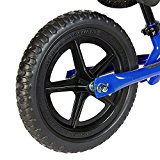 There are several different types of materials that the tires on balance bikes will be made of. The most common you will see are pneumatic (AKA air-filled), industrial foam, and rubber. Each has its own benefits and drawbacks.
There are several different types of materials that the tires on balance bikes will be made of. The most common you will see are pneumatic (AKA air-filled), industrial foam, and rubber. Each has its own benefits and drawbacks.
Air-filled: Offer more cushion, but are heavier, and can go flat. Air-filled tires will typically last longer than foam or rubber tires, depending on how much you use the bike. Foam and rubber tires will wear more quickly. Note: You may also see wide air-filled tires. These wider tires help make balancing even easier. However, these are generally the most expensive out of all of the different tires available.
Foam: Won’t go flat, but doesn’t have as much traction or cushion as air-filled tires. This shouldn’t be a problem on streets and sidewalks, but if you venture onto grass, you will lose traction.
Rubber: Also won’t go flat, and offer a little more traction and cushioning than foam tires. Although better than foam tires, rubber tires still have much less traction and cushioning than air-filled.
Tire Size
You will also find that different balance bikes have different-sized tires. Tires typically range from 10 inches to 16 inches in diameter. If you’re buying a balance bike for a toddler, look for tires in the lower range (10 or 12 inches). If you are looking for a bike for a four or five-year-old, they will do better with larger tires (14 or 16 inches). Obviously, this is based on average heights. If you have a taller toddler, they may fare well with larger tires.
Adjustability
Most balance bikes have some adjustability – usually both in the handlebars and the seat. This way as your child grows, you can adjust the bike accordingly to better fit their height. Some bikes only adjust a couple of inches, while some have wider ranges, allowing for longer use.
It is most important to focus on seat height and make sure your child doesn’t have to extend their legs in order to touch the ground. Their knees should be at a nice bend in order to properly use the bike.
Hand brake
Although a hand brake may be too difficult for young kids to operate, it is neat to include because it teaches them the concept for their next bike. Not all balance bikes have a hand brake, and I don’t think it’s a deal-breaker if a bike doesn’t include one.
Price
Price can be a big factor in any purchase you make. Balance bikes have a wide range of prices, starting at about $40 and going all the way up to $200. The more you spend, the higher quality bike you will get, up to a certain point. The cheaper bikes don’t suit as wide of age ranges, and may not be made from the best materials.
If you’re looking for a balance bike for an older child who may only get 1 or 2 years of use out of it, I think the lower-end models may be perfect. But if you are looking for a balance bike for a toddler, it is worth it to spend a little more for a lightweight bike that is suitable for their height and can last you several years.
Keep in mind that you should also factor into your cost a child helmet and elbow and knee pads. It’s always important to keep that little noggin protected! Depending on what brand you get, you should expect to pay at least between 20 and 40 dollars for a helmet and pads. Just be sure to factor this cost into your budget when looking for a balance bike.
Cheaper balance bikes can make fabulous gifts. That’s why they land on our lists of the Best Gifts for 3-Year-Old Boys and the Best Gifts for 4-Year-Old Boys.
Padding
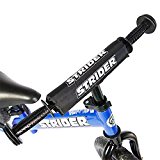 Surprisingly few balance bikes come with much padding. A padded seat will make your child’s ride more comfortable. (For more comfy seats to mount on your bike, check out the best bike seats for kids) Maybe, more importantly, I like that some models have a padded handlebar to help protect your child if they are to hit it.
Surprisingly few balance bikes come with much padding. A padded seat will make your child’s ride more comfortable. (For more comfy seats to mount on your bike, check out the best bike seats for kids) Maybe, more importantly, I like that some models have a padded handlebar to help protect your child if they are to hit it.
A helmet is a must to protect your child’s noggin, so check out our best toddler bike helmet list. It has some great picks for infants or smaller kids, too.
Assembly
If you prefer a more traditional bike, check out our list of best tricycles. Not sure if you should go with a traditional bike or balance bike? We break down which is best here.
FAQs – Balance Bikes
What is the recommended age for a balance bike?
The recommended age for riding a balance bike really depends on your child’s capabilities. Some children can start riding a baby/toddler balance bike around 9 months of age. Most children won’t start riding a balance bike between 18 months and 5 years. Always make sure to check the manufacturer’s age recommendation before allowing your child to ride a balance bike.
Why should a child ride a balance bike?
Starting your child off with a balance bike is a great way to get them focusing on (and mastering) the first part of riding a traditional bike: balance. Without having to worry about using pedals correctly and steering with a handlebar, a child can focus on balancing only and get a hang of that concept before moving onto pedals.
Another benefit to riding a balance bike is getting young riders used to two wheels from the start. Tricycles and other bikes can be helpful for pedaling but not necessarily for balancing.
Do balance bikes really work?
Yes! A great thing about balance bikes is that they give young riders a sense of confidence. This confidence helps them not fear learning to ride a traditional bike and typically makes that learning process go much faster.
Some balance bikes offer a smaller frame and wheels to help ease kids into the feel of riding a bike and being off the ground. They also may have foam wheels, allowing a child to easily ride and learn without having to worry about tire pressure.
